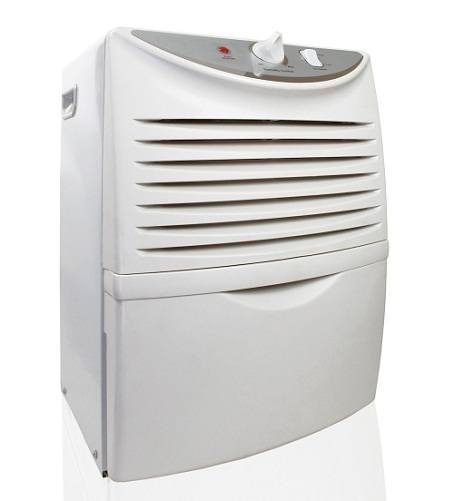So you have heard about all the fantastic advantages of owning a dehumidifier, and you went out and purchased one. It worked fine for some time, clearing up your allergies and keeping your home cool and dry. But all of a sudden, you discovered your dehumidifier runs but did not collect water.
What might be wrong with it? We know this can be a frustrating thing, and you're asking yourself,' why is my dehumidifier not collecting water?' A few possible causes are found in the article below, and we hope they help you find the answer you're searching for.
What's Going On With My Dehumidifier?
Dehumidifiers machines can take the humidity in the air and leave the house dry and easier to reside in. There are two primary types of dehumidifiers; desiccant and refrigerant. Refrigerant dehumidifiers have refrigerated coils within them, which work to deal with the humidity. When the humid air flows through the dehumidifier, the humidity is trapped on the coils. Because of this, the air that is blown back into the room is warm but dry.
Refrigerant vs. Desiccants dehumidifiers
Desiccant dehumidifiers use a chemical known as a desiccant to eliminate the moisture from the air. The chemical will absorb the dampness from the atmosphere, then release the dehumidified air back into the room later. Below are a couple of reasons as to why a dehumidifier may not be accumulating water.
Not Adequate Humidity In The Air To Collect

If there is no high degree of relative humidity in the home, the dehumidifier won't have any moisture to collect. The relative humidity of a home is dependent upon the air temperature outside and inside. If the temperature is too low than the humidity level, there'll be little to no extra moisture to the dehumidifier to accumulate.
For the first little while, after the dehumidifier was in operation, it probably accumulated a whole lot of moisture. This is because it gathered all of the excess water from the ceilings, walls, and things in the general region. After that has been done, all that's left for the dehumidifier is to maintain and regulate the amount of humidity. There'll not be much humidity left in the atmosphere, so the dehumidifier may quit collecting water at some points.
Temperatures Are Too Low
Certain kinds of dehumidifiers will need to be at a high enough temperature or stop operating correctly. When the temperature reaches approximately 65° Fahrenheit, the machines' coils will freeze, and ice will form. Also, if the room temperature is too low, it's harder for the dehumidifier to reduce humidity from the air. If the temperature is set at 60° F, the humidity will probably not become less than 60%.
There are various kinds of dehumidifiers that you can buy for basements and other spaces that are predicted to have lower temperatures. These machines can function in temperatures that are approximately as low as 30 degrees Fahrenheit.
Wrong Sized Dehumidifier

It may be the case in which you have purchased a dehumidifier that has a greater water removal capacity than you require. A few machines are designed to function for just a single room and a few purposes for the whole house. Those who have a more compact dehumidifier can remove about 30 pints of water each day. For those who have a bigger one, it can remove more than 90 pints of water daily. Putting a sizable dehumidifier in a little room may lead to less water collection than you're expecting. It's not the case for small dehumidifiers in large areas; these will probably collect far more water than was expected.
Sometimes, the dehumidifier runs but does not collect water. And that is a sure sign you've got the wrong size. If you're having difficulty deciding what size dehumidifier is perfect for you, you will find useful charts online to guide you. They're based on the size of the area which you would like the dehumidifier for. Instead, you can visit the store and ask a sales representative if you're unsure. It's always better to ask than to get the wrong product.
Parts Are Malfunctioning
There are many different parts to a dehumidifier that all come together to achieve a result. This means there are lots of components that could break down and block the whole machine's operation.
If the compressor has failed, you will probably hear a buzzing sound every once in a while. After the compressor stops operating, the humidity will grow, and moisture won't be collected.
When the coils begin leaking refrigerant out, it means you've got a leak in the refrigeration system. The coils will stop collecting the moisture when air passes through the system.
The filters or condenser may be clogged. Check to determine if you're able to wash out any of the filters to free the airflow in the dehumidifier.
If the humidistat isn't functioning correctly, it will show the inaccurate humidity level of the region. Or it won't indicate the dehumidifier to work at a set humidity level. You can try and fix this problem, or record the number of the part and find a replacement.
Conclusion
When your dehumidifier stops collecting water, it might not always be a bad thing. The very best case scenario is that there's not enough humidity in the air at that particular time. To determine if this is the case, you could wait for a day, which brings more humidity than usual. Assess if the dehumidifier starts working normally again. If it does not, you will likely have to troubleshoot the issue and replace a component.


